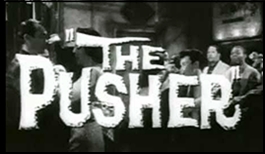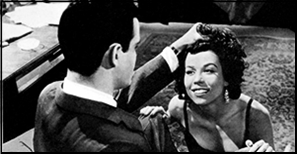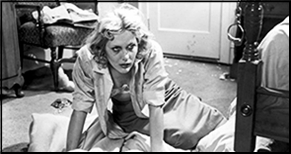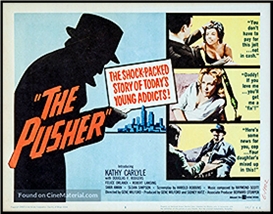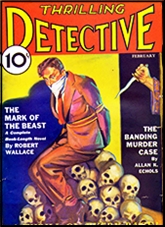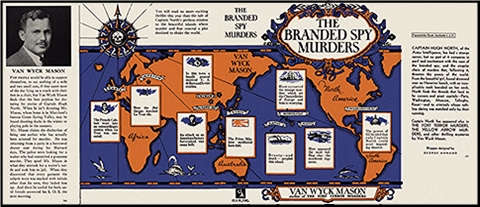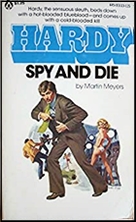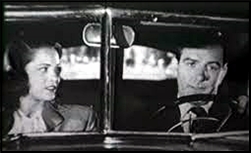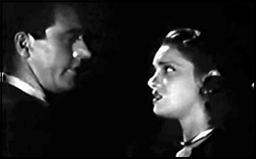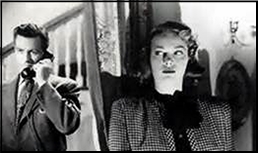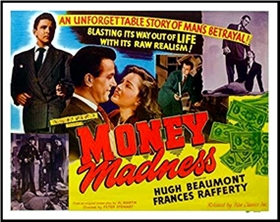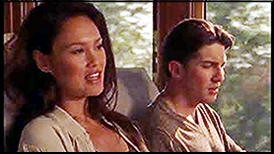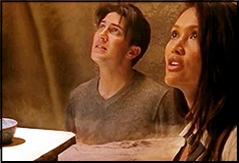Wed 10 Jun 2020
Reviewed by Mike Tooney: OLD-TIME DETECTION, Spring 2020.
Posted by Steve under Magazines , ReviewsNo Comments
(Give Me That) OLD-TIME DETECTION. Spring 2020. Issue #53. Editor: Arthur Vidro. Old-Time Detection Special Interest Group of American Mensa, Ltd. 34 pages (including covers). Cover image: Ellery Queen and Nikki Porter.
By retrieving and curating interesting facts and arcana about the detective story, Arthur Vidro renders an invaluable service to today’s readers, with the latest issue of Old-Time Detection (OTD) nicely continuing that tradition.
The primary focus this time is on the writer(s)-cum-fictional character, multimedia star Ellery Queen (“the American detective story,” in Anthony Boucher’s estimable estimation). While EQ’s popularity has diminished over time, “his” relevance to the development of the genre worldwide never will, placing “him” in that rarified pantheon of mystery writers that includes Edgar Allan Poe, who originated modern detective fiction; Conan Doyle, who expanded and popularized it; and that bevy of authors, many of them female, who profited most from it.
Among the varied attractions of this issue: Charles Shibuk’s article on the current trend in trade-paperback republications of classic detective fiction … commentaries by the world’s foremost Agatha Christie expert Dr. John Curran on the recent death of Christie specialist artist Tom Adams; the deplorable film adaptations of her works (“the only murder that was committed during the two hours was that of the legacy of Agatha Christie; and that the perpetrator was the BBC”); a card game (“an entertaining way to pass the time”); a coin celebrating the centenary of The Mysterious Affair at Styles accompanied by a reissue of the novel; and a prospective Agatha Christie film festival … Vidro’s reprint of Edward D. Hoch’s own introduction to his collection of Simon Ark stories (who, says Hoch, “owes a far greater debt to Father Brown than to Carnacki and the other occult sleuths”) … and Jon L. Breen’s contemporary review of Douglas Greene’s The Dead Sleep Lightly, a collection of radio plays by John Dickson Carr (“probably the greatest of all radio suspense scripters”).
Still more attractions in OTD: Marvin Lachman’s compact biography of Ed Hoch (who “did not achieve the quantity of his writing by sacrificing quality”), with Hoch returning the favor to Lachman (“arguably our greatest mystery short story fan and proponent”) … Jon L. Breen’s review of Murder on Cue (“a case that is resolved most fairly and satisfactorily in an old-fashioned gathering of the suspects”), its chief attraction in his view being its theatrical background … Dale Andrews’s discovery of Ellery Queen’s “Easter Eggs,” by which he means the Christian holiday … and J. Randolph Cox’s account of how he first became aware of EQ and his life and subsequent encounters, personal and professional, with Ellery over the years.
Further into this issue: Ted Hertel’s article about the two-and-only appearances that EQ made in Better Little Books … Arthur Vidro’s sidebar about that indefatigable Ellery Queen researcher, Mike Nevins (“nearly all roads [to EQ scholarship] lead to or through Nevins”) … Marv Lachman’s first and life-long encounters with EQ (“I loved Queen’s appeal to the brain”) … a memorable anecdote by book collector Andrew J. Fusco, a Sherlockian, about his meeting with Fred Dannay … J. Randolph Cox’s in-depth exploration of the religious underpinnings of the fiction by the two cousins known as Ellery Queen … Les Blatt’s review of The Chinese Orange Mystery (“The crime that was backwards”) … Ted Hertel’s take on The Misadventures of Ellery Queen (“I was not disappointed”) … this issue’s fiction piece, EQ’s radio play “Adventure of the Cellini Cup,” which, as Arthur notes, leaves somewhat to be desired as a fair play mystery … Michael Dirda’s pithy reviews of new fiction and nonfiction (“there’s plenty of excellent entertainment to be found in the Golden Age rivals of Dame Agatha”) … and finishing up with readers’ responses and a puzzle, this one with an alimentary theme.
As usual, Old-Time Detection is always able to provide what classic detective fiction fans crave.
A review of the previous issue of OTD is available on Mystery*File here.
—
If you’re interested in subscribing: – Published three times a year: spring, summer, and autumn. – Sample copy: $6.00 in U.S.; $10.00 anywhere else. – One-year U.S.: $18.00 ($15.00 for Mensans). – One-year overseas: $40.00 (or 25 pounds sterling or 30 euros).
Payment: Checks payable to Arthur Vidro, or cash from any nation, or U.S. postage stamps or PayPal.
Mailing address: Arthur Vidro, editor, Old-Time Detection, 2 Ellery Street, Claremont, New Hampshire 03743.
Web address: vidro@myfairpoint.net.
